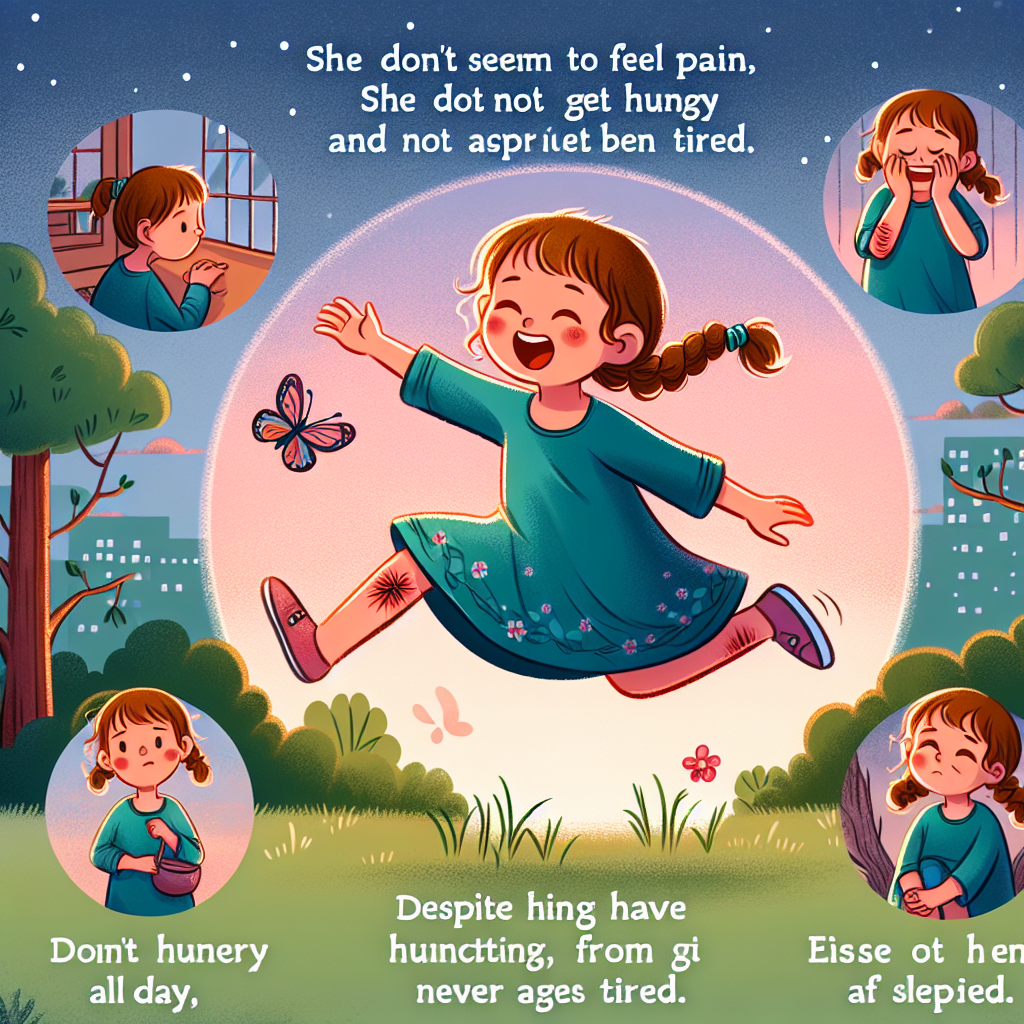The Remarkable Case of Olivia Farnsworth: The Girl Who Defies Pain, Hunger, and Fatigue
The Remarkable Case of Olivia Farnsworth: The Girl Who Defies Pain, Hunger, and Fatigue
Introduction to Olivia Farnsworth
Olivia Farnsworth, a young girl from the UK, has captured global attention due to her extraordinary medical condition. She is often referred to as the “bionic girl” because of her unique ability to feel no pain, hunger, or fatigue. This rare condition has puzzled medical experts and sparked widespread interest.
Understanding Her Condition
Olivia’s condition is attributed to a rare chromosome disorder, which is believed to be a result of a chromosome 6 deletion. This genetic anomaly is extremely rare and has led to her unusual symptoms.
- No Pain: Olivia does not experience pain, which means she can endure injuries without the typical physical response.
- No Hunger: She rarely feels hungry, which requires careful monitoring of her diet to ensure she receives adequate nutrition.
- No Fatigue: Olivia can go without sleep for extended periods, showcasing an unusual level of energy and alertness.
Challenges and Adaptations
While Olivia’s condition might seem advantageous, it presents significant challenges. Her inability to feel pain means she is at risk of severe injuries without realizing it. Additionally, the lack of hunger and fatigue requires her family to maintain a strict routine to ensure her well-being.
Medical and Scientific Interest
Olivia’s case has drawn interest from the medical community, as it offers insights into pain perception and genetic disorders. Researchers are keen to study her condition further to understand the underlying mechanisms and potential applications in pain management and other medical fields.
Conclusion
Olivia Farnsworth’s remarkable condition challenges our understanding of human biology and genetics. Her ability to defy pain, hunger, and fatigue is not only a medical curiosity but also a testament to the complexities of genetic disorders. As research continues, Olivia’s case may pave the way for new discoveries in medicine and genetics.








































